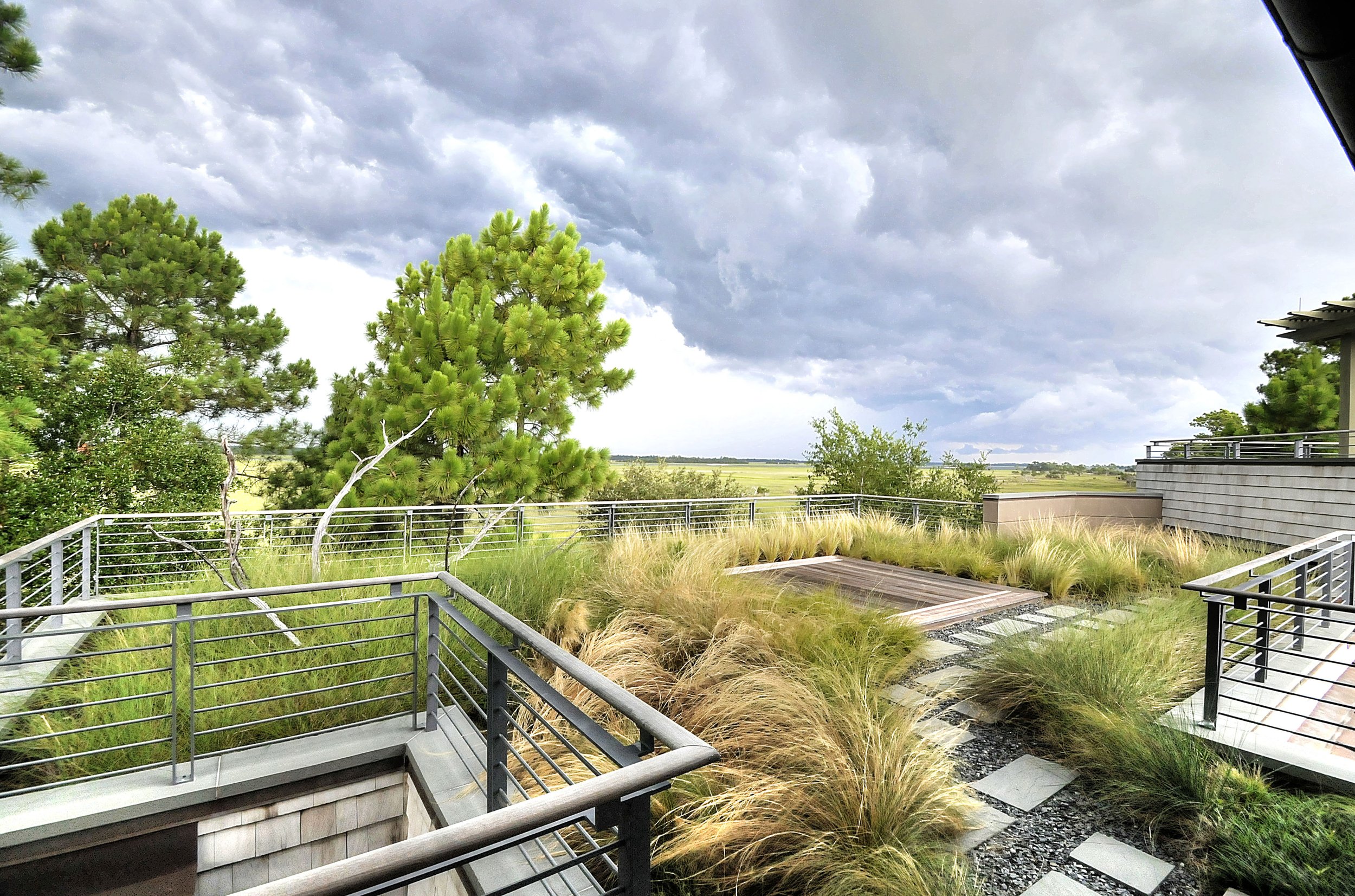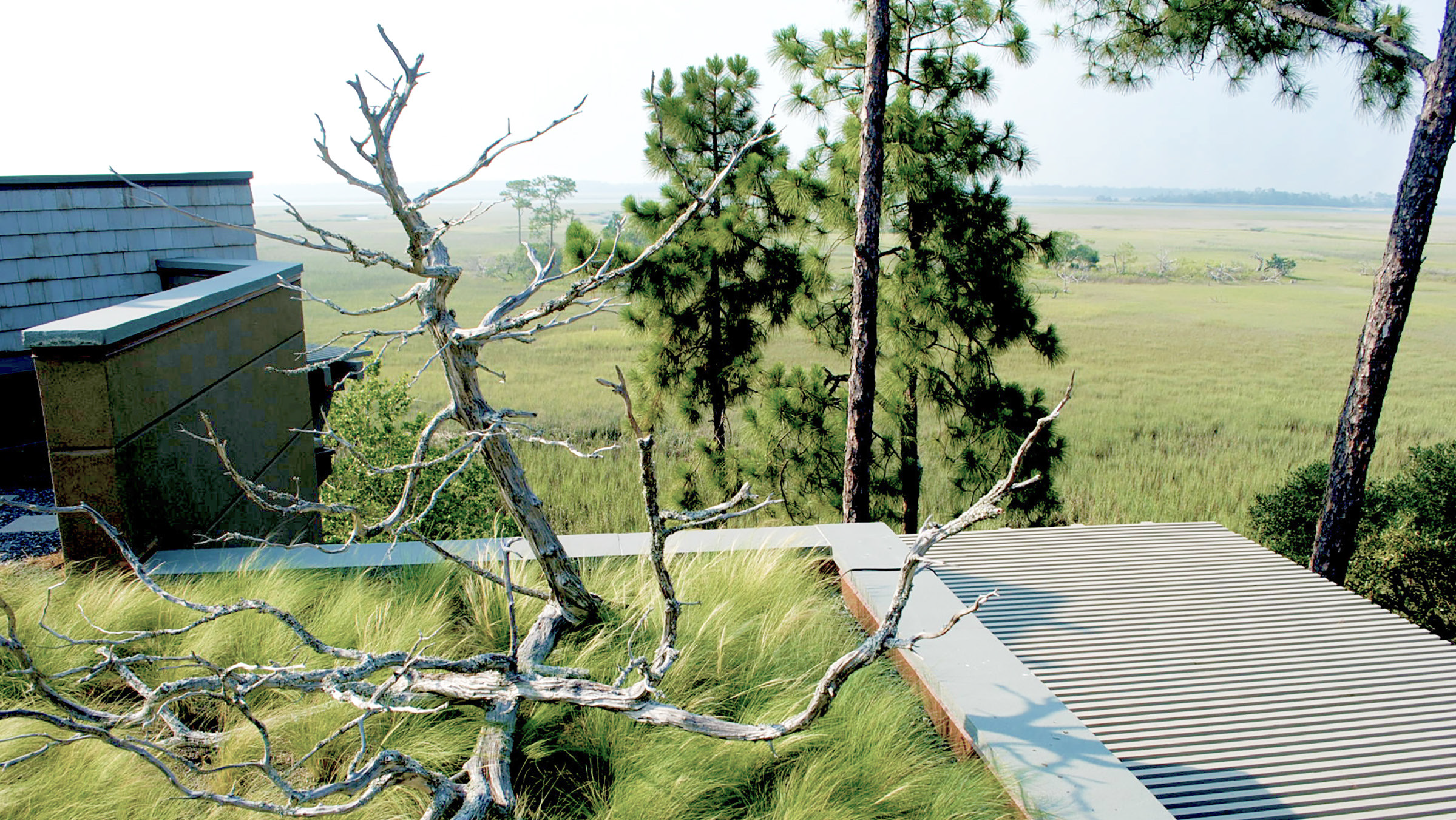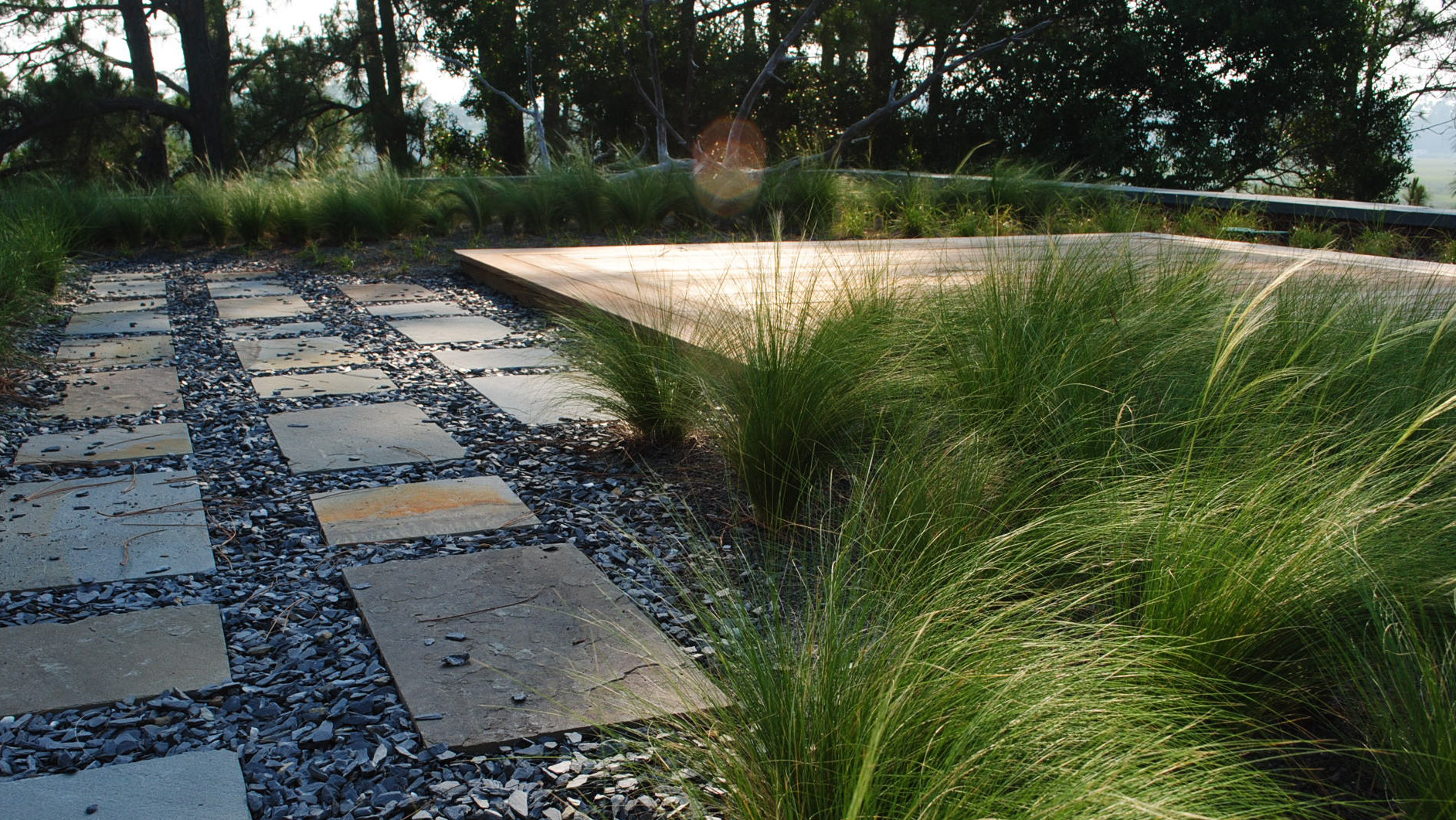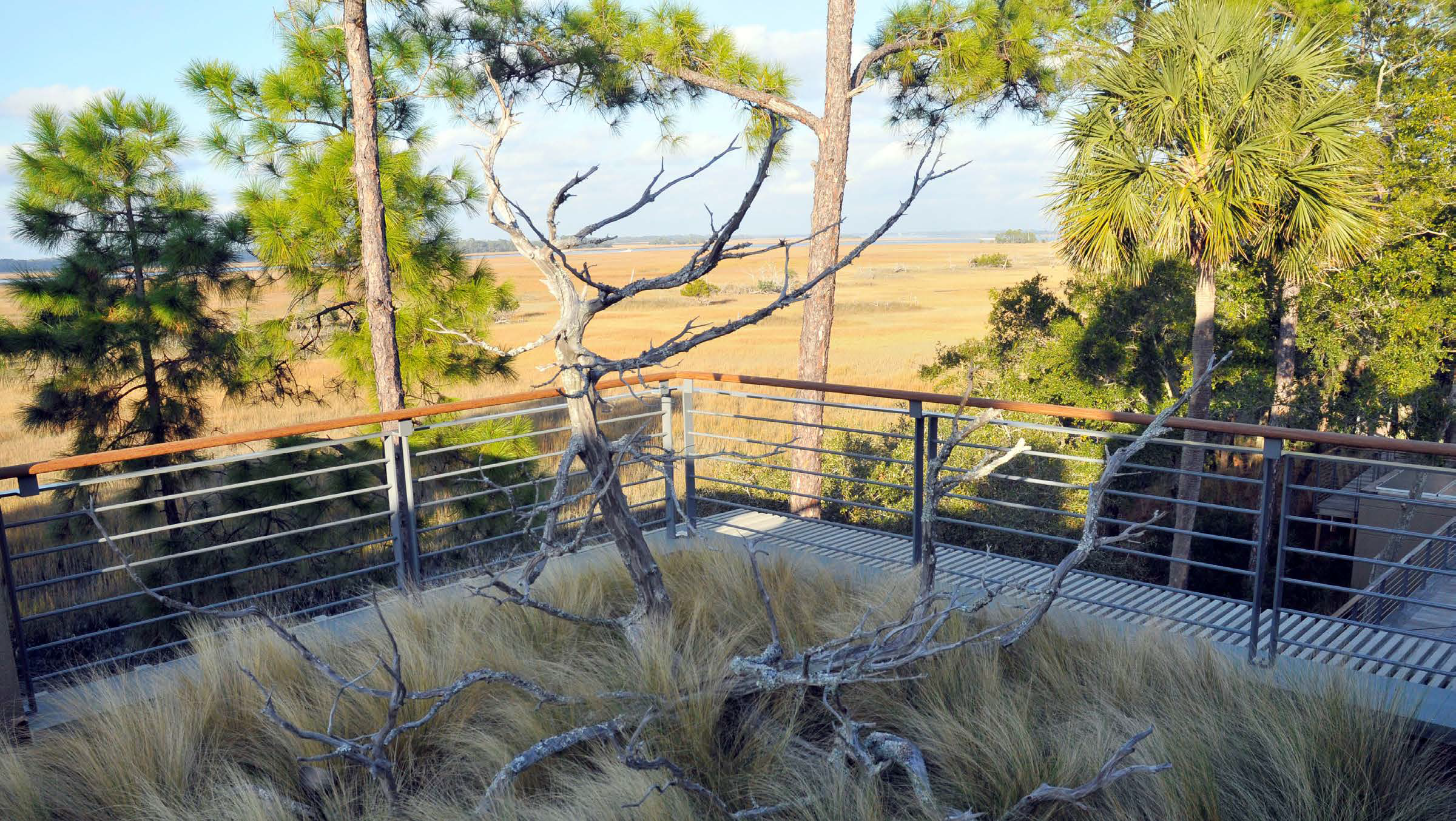Project Team
Architect: Thomas Denzinger Architects
General Contractor: Koenig Construction, Inc
Green Roof Construction & Maintenance: Living Roofs Inc
Landscape Architect: Wertimer + Cline
“These second-story green roofs utilize grasses and natural textures to minimize delineation between the residence’s roof structure and its surrounding environment, creating a harmonized view of the coastal marshland. The green roofs provide outdoor living space for gathering or quiet reflection with a restorative connection to nature. Winding pathways of natural bluestone pavers are flanked by fluffy grasses that visually and tangibly engage with the landscape and create a feeling that one is simply sitting in the middle of the marsh.”
Saltwater Marsh Inspired Generational Retreat
This coastal residence, located on the outskirts of a saltwater marsh in Kiawah Island, South Carolina, serves as a luxe generational retreat. Together the project's talented team of architects and landscape architects designed an inspired project in a beautiful and ecologically sensitive setting. The home's thoughtful use of natural materials and generous glazing throughout creates continuity and a connection with the surrounding environment. This use of natural materials extends to the living roof areas, which provide a unique vantage point from which to observe and experience the marsh.
The landscape architect for this project designed the amenity space --which includes a deck, winding pathways, and green roof layout-- with the intent to mimic the home's stunning natural setting. The green roof installer provided assistance with plant selection, green roof system technical consultation, and performed installation and green roof maintenance throughout the plant establishment period. These two teams worked closely during construction to achieve the project vision.
The home's guest house and main house support living roofs that cool the buildings, support habitat, and increase biodiversity as well as significantly reduce storm water runoff and protect the vital coastal buffer zone just feet away. These green roofs create an accessible rooftop garden composed of natural materials and plant species selected for both their visual and biological compatibility with the environment-- an ideal space for taking in the views of the surrounding salt marsh. The diversity of plant material not only creates a lush and beautiful outdoor area, it also creates a migratory refuge and habitat for a wide array of species. The plants and underlying green roof system reduce stormwater runoff volume and peak flow from entering the surrounding salt marsh.
Tidal salt marshes are coastal wetlands between land and open saltwater that flood and drain with the tides, creating dynamic and unique environments. The Kiawah River ecosystem is home to an enormous amount of biodiversity including bivalves, crustaceans, fish, and over 140 species of birds.
In response to this very special ecological context, plant species for this project were chosen with intent to blend in visually with the surrounding environment while thriving in the substantially different microclimate the roof offers compared to that of the native salt marsh grasses. The inhabitants of the marsh don't seem to mind the diversity, as they thrive in the grassy landscape which provides shelter, nesting materials, and food. A large piece of cedar driftwood brought up to the green roof for aesthetics creates additional habitat for a range of creatures. The resulting established green roof serves as a curated extension to the salt marsh ecosystem.






The two green roof areas on the second level of the residence provide outdoor living space for social gathering or quiet reflection with a restorative connection to nature. Winding pathways flanked by fluffy grasses lead to an elevated covered sitting porch situated between the green roofs. As one meanders through the vegetation on natural bluestone pavers, they visually and tangibly engage with the landscape. The elevated perspective provides long-range views of the marsh while adjacent green roof vegetation adds to the feeling that one is sitting in the middle of the marsh. These direct connections to nature both visually and sensorially reduce heart rate, allowing one to relax and be present in the space. This has both physical and mental health benefits for indivduals interacting with the green roof.
The materials used are all natural materials that blend into the landscape and coexist harmoniously with the at-grade environment. Materials were sourced locally to the extent possible. Salvaged dead trees were gathered and saved from the site's marsh edge and are placed within the vegetation to visually connect the green roof to the surrounding salt marsh landscape.
During construction, materials had to be develivered to the site in small batches since acesss to the site was through a sensitive environment and there was a small building envelope and limited access around the building. Close attention was taken during construction to limit disturbance to the surroundings.
The green roof installation company is minority-owned, Living Wage certified, and places organizational emphasis on the wellbeing and continued professional development of its employees.
Due to the close proximity of the salt marsh, with an awareness of the cascading effects of runoff in environmentally sensitive areas, green roof maintenance practices for this project included avoiding pesticide and fertilizer use. Maintenance for the critical plant establishment period focused on plant health and included replanting and moving species to adapt to microclimates rather than use of chemicals. Once the green roof was established and poised for success, its maintenance was handed over to the homeowner to care for and enjoy.
The Judges felt this project was a beautiful showcase of how a green roof can blend into the local landscape and engage the surround ecology and context

